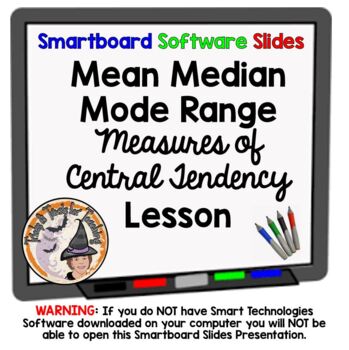Mean, Median, Mode, Range Smartboard Slides Lesson Measures of Central Tendency
- NOTEBOOK (SMARTboard) File
Description
You'll LOVE this great Data Measures-of-Central-Tendency: Mean, Median, Mode, & Range Smartboard-Slides-Lesson. Your students will LOVE this interactive smartboard lesson that teaches and practices Mean, Median, Mode, and Range, along with a Card Game for practice. YOU GET 28 slides total, a very comprehensive and complete lesson. You'll enjoy using this great smartboard lesson year after year.
WARNING:
You MUST have SMART Technologies SMART software, and a SMARTBOARD to teach from, to effectively download, open and use this Interactive Smartboard Lesson. Go to https://legacy.smarttech.com/en/products/education-software/smart-learning-suite/download/trial to download a free trial.
Be sure to L@@K at my other 1,285+ TERRIFIC teaching resources!
~ ~ THANK YOU KINDLY ~ ~





